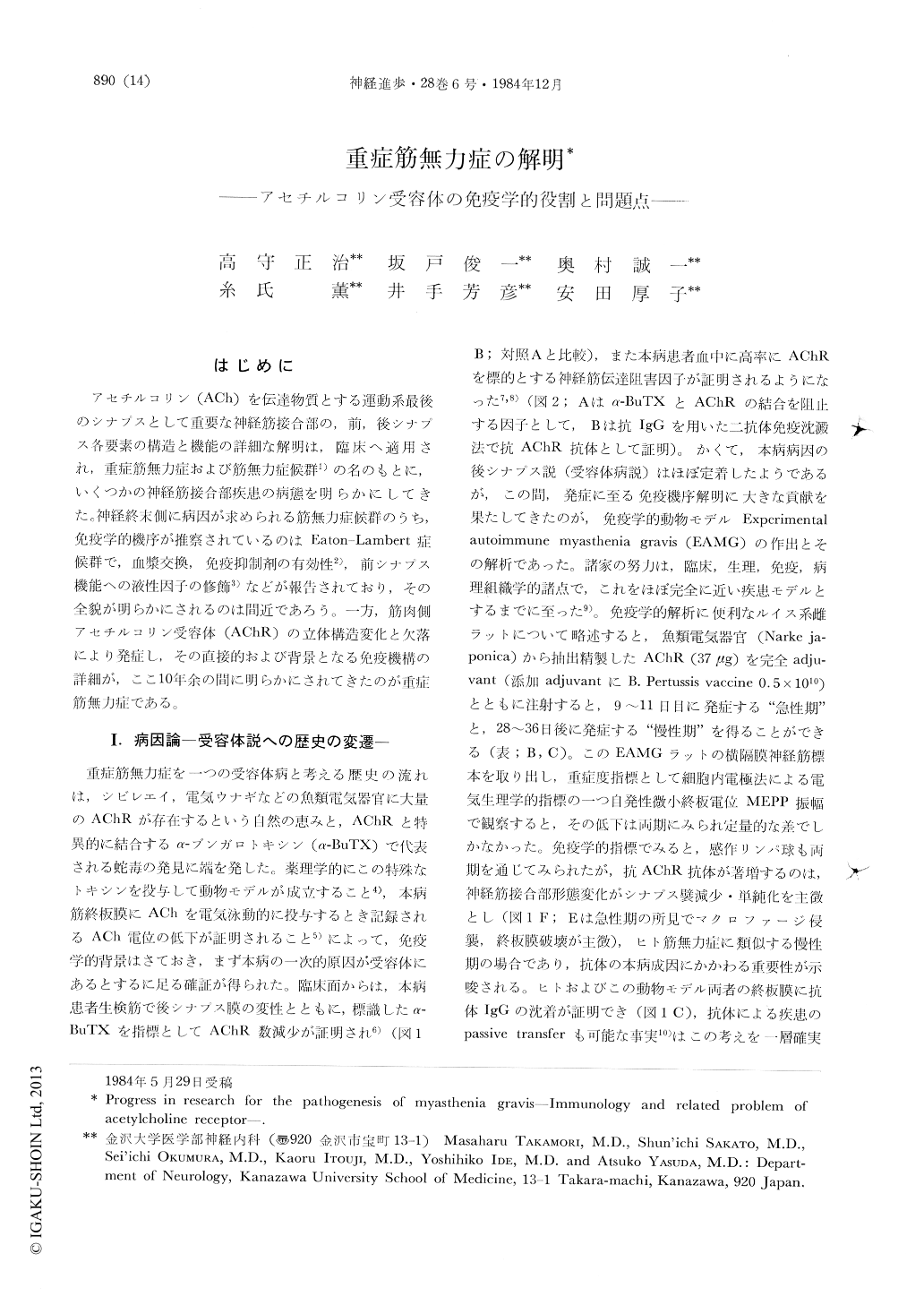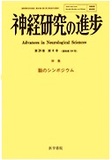Japanese
English
- 有料閲覧
- Abstract 文献概要
- 1ページ目 Look Inside
はじめに
アセチルコリン(ACh)を伝達物質とする運動系最後のシナプスとして重要な神経筋接合部の,前,後シナプス各要素の構造と機能の詳細な解明は,臨床へ適用され,重症筋無力症および筋無力症候群1)の名のもとに,いくつかの神経筋接合部疾患の病態を明らかにしてきた。神経終末側に病因が求められる筋無力症候群のうち,免疫学的機序が推察されているのはEaton-Lambert症候群で,血漿交換,免疫抑制剤の有効性2),前シナプス機能への液性因子の修飾3)などが報告されており,その全貌が明らかにされるのは間近であろう。一方,筋肉側アセチルコリン受容体(AChR)の立体構造変化と欠落により発症し,その直接的および背景となる免疫機構の詳細が,ここ10年余の間に明らかにされてきたのが重症筋無力症である。
The study on the pathogenesis of myasthenia gravis, details of which were clarified mainly from the viewpoint of humoral immunity, has been further developed by the introduction of monoclonal antibody and analysis of the subunit-structure of acetylcholine receptor. Putting forward the currently accepted concept of antibody-receptor interaction in the pathogenesis of this disease, we further studied an animal model in terms of the accelerated degradation of the receptor in vivo, complement-mediated cytolysis, and the modification of the receptor by calmodulin and prostaglandin E1.

Copyright © 1984, Igaku-Shoin Ltd. All rights reserved.


